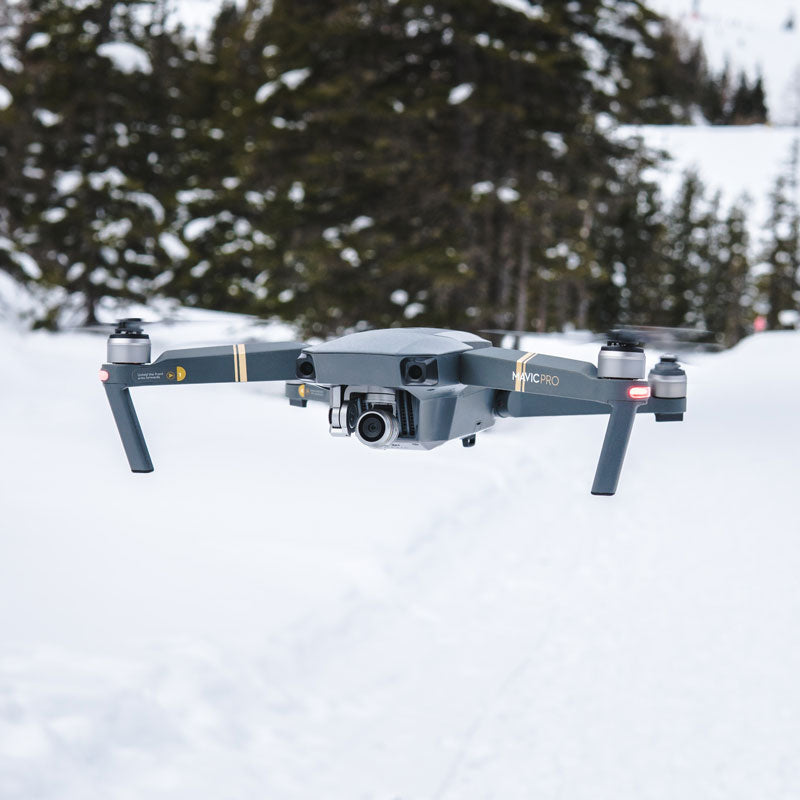Adventure drone pilots typically put their drones through harsh conditions. Utah is no exception to these extreme environments especially, when winter rolls around. Low temperatures and snow can be a hazard for your drone and may limit its capabilities. In this blog, we will cover best practices for before, during and after your flight to ensure your drone is in the best possible shape even in the harshest environments.

Keep an Eye on Your Battery Life
We've all heard the horror stories of drones losing power all of a sudden and taking a fatal crash or dip in the sea. Since batteries use chemical reactions to work, freezing temperatures can slow or stop those reactions. Drone batteries are made of Lithium and when placed in temperatures lower than 59°F, there will be a decrease in voltage. If your battery level drops suddenly, your drone may not be able to maintain the maximum flight speed and could be at risk of power failure.

There are plenty of precautions you can take to optimize your drone's battery capacity. To start, make sure to fully charge your batteries beforehand to confirm that your battery voltage is normal. While you're on location, pre-heat your batteries to a temperature above 59°F. One way to do this is to wrap a hand warmer around the battery. Additionally, you can have your drone hover for about 1 minute after taking off to fully preheat the battery. Closely monitor changes in battery levels and avoid flying on a low battery. It's also a good idea to avoid long spells of high flight speed.
Temperature Variations Can Affect Performance
Variation in temperature, for instance, from a warm car to the brisk, cold outside air can affect your drone's performance. Just like when someone wearing glasses walks into a warm room from the outside and their glasses fog up, the same can happen to a lens. Not only that but condensation can cause issues in the electrical units when transferring your drone from a cold environment to a warm one. The cold temperature can also hinder the gimbal rubber and eventually cause the camera to shake.

Before your flight, it’s always smart to wipe off any snow, ice or liquid from the drone to limit freezing when flying. We recommend using a landing pad for take off and landing for added precautions. After take off, in addition to pre-heating your batteries, hovering for 1 minute can help defog the lens. After the flight, promptly wipe down any condensation on the surfaces to prevent electrical issues. Store your drone in a protective case and in a dry, indoor environment.


1 comment
George Loch
Also keep in mind that some drones function better in colder temps than others. Be sure to check manufacturers’ suggested operating temperatures.